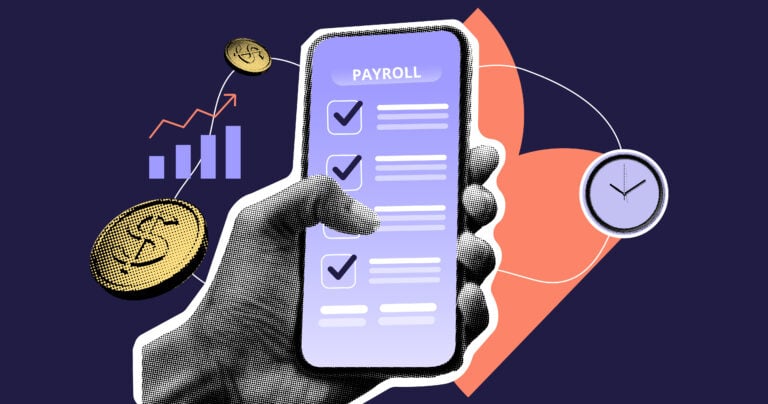Looking for a way to streamline your vendor-related processes from managing orders and contracts to deliveries and payments? You’ve come to the right place! Discover the top 11 vendor management systems of 2025 that will help you do just that.
Vendor management is critical to most businesses’ day-to-day operations. But if handled manually or with scattered systems, it quickly becomes unnecessarily time-consuming, disorganized, and error-prone.
With the right vendor management system, you can streamline your vendor management processes end-to-end, boost efficiency, reduce costly mistakes, and, ultimately, significantly influence your company’s overall success.
Check out these 11 top vendor management software solutions and find your perfect fit.
Our Top Picks
-
1
Best all-in-one vendor management system
-
2

Best for banking and financial services
-
3

Best for IT companies
Why trust us?
Our team of unbiased software reviewers follows strict editorial guidelines, and our methodology is clear and open to everyone.
See our complete methodology
What to Look For in a Vendor Management System (VMS)
There are a few key functionalities to consider when choosing the right vendor management system for your business:
- Data management: An ideal VMS allows users to create and oversee both vendor data and to manage documents, such as financial statements, contracts and insurance certificates.
- Risk and performance management: Assessing new vendors should be automated and measuring risk levels should be given automated scores. Your VMS should be able to track vendors based on risk and performance.
- Vendor communication & collaboration: Vendors should be able to securely provide documentation and information to your business. With the right VMS portal, you and your vendors can communicate and collaborate before, during and after contract periods.
- Reporting: An ideal VMS should allow users to report on vendor-based processes, making it easy to relay valuable information to management.
- Compliance management: Many industries require vendor management software that makes it easy to comply with strict rules and regulations.
- Recruiting and onboarding: You probably need a VMS that allows you to effectively hire and onboard appropriate vendors to align them with your business processes.
- Integrations: Your chosen vendor management platform should be able to integrate with various business software solutions, such as payroll software and 3rd party risk intelligence solutions.
The 11 Best Vendor Management Systems of 2025
-
Connecteam — Best all-in-one vendor management system
Connecteam is an all-in-one solution for managing non-desk employees, even while on the go. While this mobile-first solution is not explicitly designed to manage vendors and contingent workers, it offers a wide range of features that can be tailored to meet your specific needs.
Here are some reasons why you should strongly consider using Connecteam for its vendor management capabilities:
Document management
Connecteam’s document management app allows you to digitize your file cabinet. You can manage, organize, and keep track of vendor contracts, certificates, and licenses – in one secure and organized location. Simply send users document requests, which they can upload to the app from their mobile phones. This way, you can skip time-consuming manual paperwork.
Onboarding
Easily create and deliver onboarding courses right to your users’ mobile phones and align vendors with your organization’s workflows. Divide courses into bite-sized sections for easier learning and include training material in any format.
As an admin, you’ll have a clear overview of your users’ performance, progress, and course completion from your admin dashboard.
Company directory
With this digital phonebook, you can organize, search, and directly contact any external and internal work contacts. You can search contacts by name, company name, position, or any other custom field and add notes with additional details, such as preferred call hours or set delivery times.
Admins fully control which contact information is visible to particular users, ensuring contacts stay safe within the company.
Task management
Connecteam’s task management app allows you to easily create and assign tasks to users to complete on the job. Attach relevant task information, digital forms, or checklists and maintain a clear real-time overview of progress on each task.
In-app chat
WIth the in-app chat, you maintain a direct line of communication with your vendors from anywhere. Simply access the chat from anywhere in the platform and instantly get in touch with all the right people.
Integrations
Connecteam integrates with:
- RUN Powered by ADP®
- Quickbooks
- Gusto
- Paychex
- Xero
- Zapier
And so much more…
In addition, Connecteam offers exceptional customer support, an intuitive user experience, excellent employee management tools, and high customizability, allowing you to adjust the platform to suit your business needs.
Connecteam also offers a free for life plan – Try Connecteam here!
Key Features
Pros
Intuitive and easy to use
All-in-one solution
Great customer support
Budget-friendly
Cons
Needs internet or wifi access to work
Pricing
Free-for-life plan availablePremium plans start at $29/month for 30 users
14-day free trial, no credit card required
Start your free trial -

SAP Fieldglass — Good for: Banking and financial services
Available on
- Web
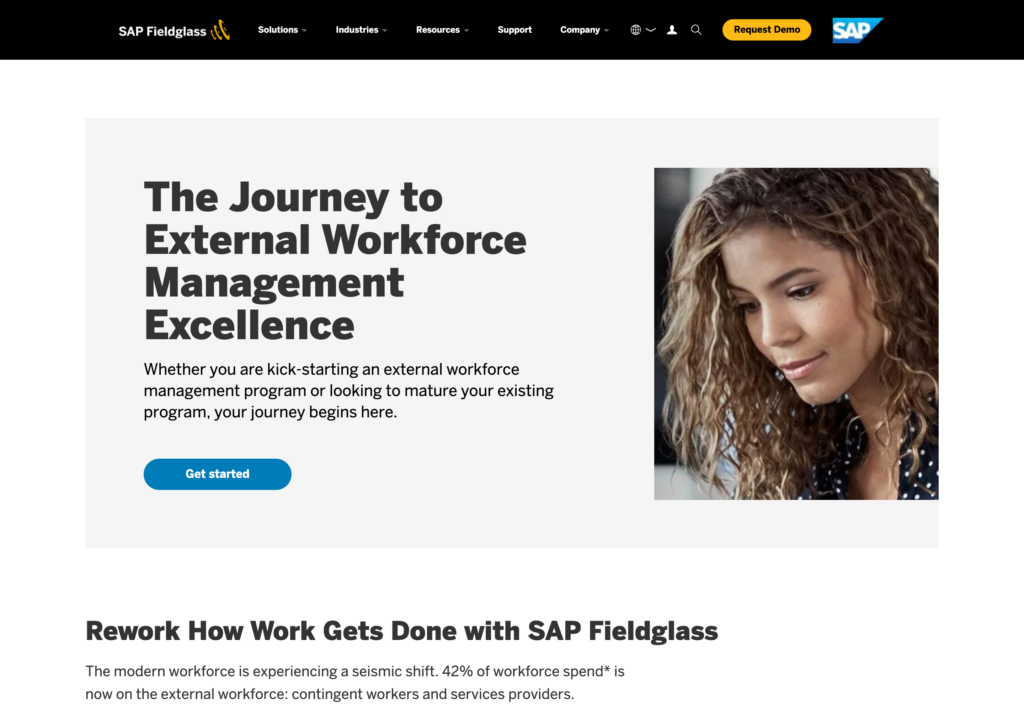
SAP Fieldglass is a well-known vendor management system that allows users to manage every part of their vendor network. This includes the ability to track each vendor’s performance and handle contracts and compliance.
With SAP Fieldglass, it’s easy to manage every step of a vendor’s journey, from hiring them via the software’s Digital Partner Network, giving users the ability to filter service providers based on specific skills. Users can onboard and offboard vendors automatically. Paying directly from the software is also possible. SAP Fieldglass’s vendor management software comes with a wide range of 3rd party integrations, with the ability to sync with cloud-based solutions such as Salesforce, Oracle, Kronos, and Microsoft Dynamics, to name a few.
Although it’s pretty easy to use, we believe that users should seek assistance and training from its customer support, in order to use to software to its full potential. SAP Fieldglass provides separate mobile apps for different purposes – like one specifically for managers, and another two for vendors to receive tasks and submit timesheets, respectively.
Unlike SAP Fieldglass, Connecteam’s all-in-one capabilities mean that it boasts a much wider range of features, while still lending itself to vendor management – such as onboarding, contract management, integrations with payroll software and internal communication features – all from one device.
It’s also worth noting though that SAP Fieldglass doesn’t come cheap, and pricing is only available upon request.
Key Features
- Contract management
- Compliance/performance tracking
- Payment options
- Onboarding and offboarding
Pros
- Good customer service and support
- Strong list of integrations
Cons
- Some companies may be overwhelmed by number of features
- Expensive solution
Pricing
Contact vendor for price Trial: No Free Plan: No
-

Genuity — Good for: IT Companies
Available on
- Web
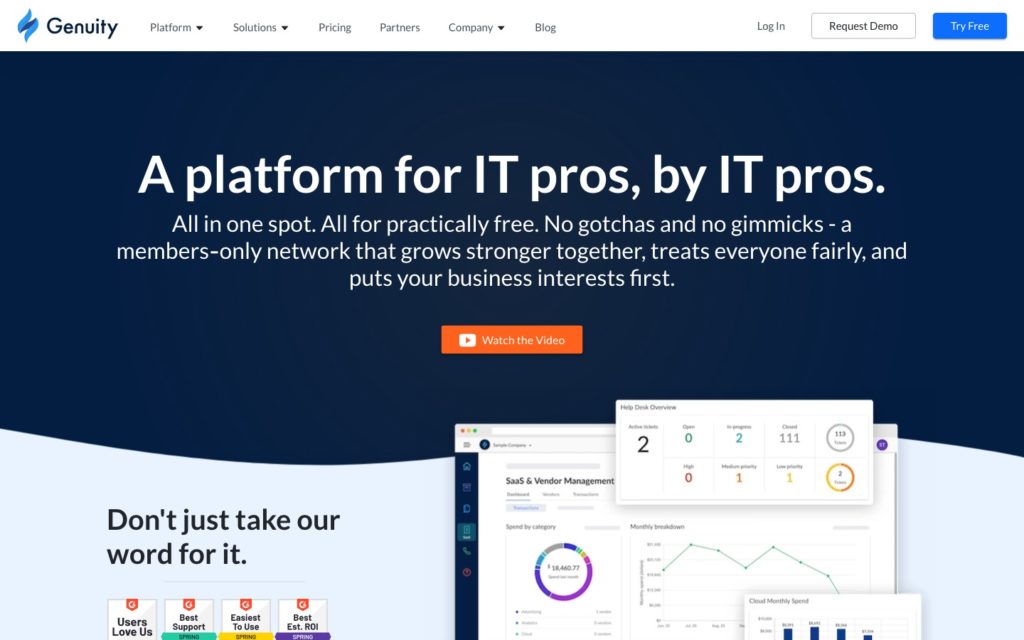
One of the most affordable vendor management systems on this list is undoubtedly Genuity. This platform includes many IT-based features, like being able to manage telecom expenses, as well as automating help desk requests.
It also provides most of the capabilities one would come to expect with vendor management – such as contract management, spend tracking, and asset visibility. One big plus is the many platforms that Genuity integrates with, such as QuickBooks, AWS, Salesforce and G Suite, amongst others.
Genuity’s low, transparent pricing is mainly due to its limited range of VMS tools, compared to other solutions on this list. For example, while you’ll spend a bit more using Connecteam, you’ll get a much wider range of business management features via its free plan, with the ability for you and your vendors to handle daily business directly from mobile devices.
Key Features
- Contract management
- Track spending
- IT assets
- Telecom expense management
Pros
- Unlimited users
- Easy-to-use and attractive interface
Cons
- Not the best option for deskless teams
- Doesn’t have a wide range of features
Pricing
Starts at $29.99/month Trial: Yes — 30-day Free Plan: No
-
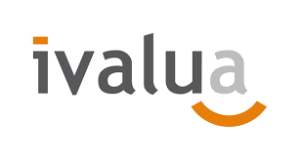
Ivalua — Good for: Businesses in highly-regulated industries
Available on
- Web
- Windows
- Mac
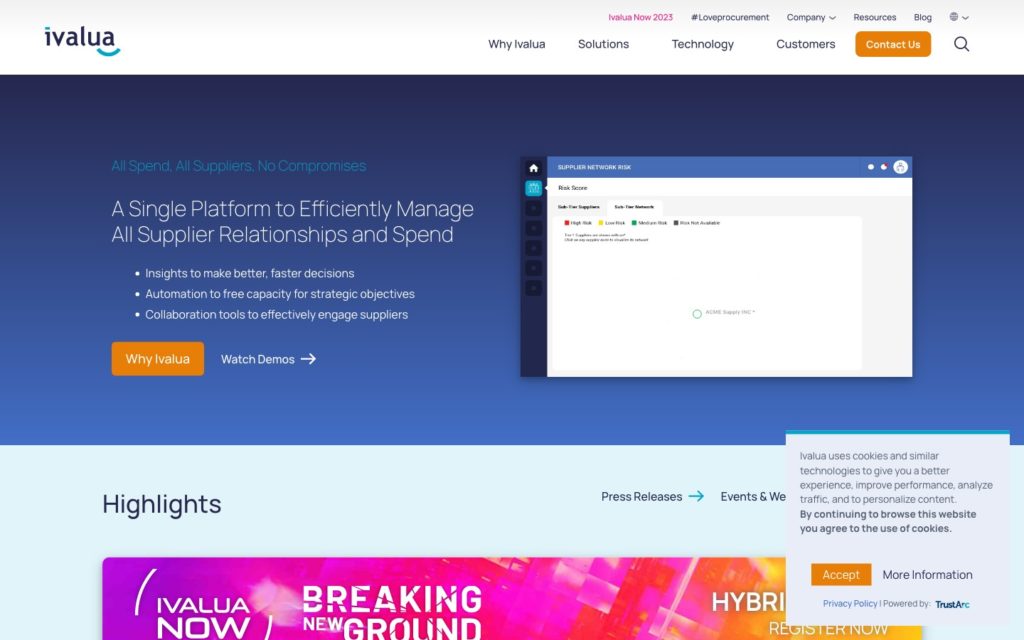
Ivalua is an ideal vendor management system for medium-to-large businesses looking to manage budgets, contracts, and invoices. With strategic sourcing, procure-to-pay and direct spend management, Ivalua includes many of the classic features you’d come to expect from vendor management software.
Ivalua key strengths lie in its customizability, with many ways to tailor its features to meet specific business needs. It is also very easy to use and is pleasing on the eye. Truth be told though, Ivalua’s VMS system can run slowly at times and when there are errors or bugs, it can be difficult to get in touch with customer support.
And as previously mentioned with other solutions, Ivalua doesn’t include its pricing online. Other apps on this list like Connecteam don’t have the same kind of pricing transparency issues.
Key Features
- Document validation workflows
- Issues management
- Risk evaluation
- Performance evaluation
Pros
- Highly customizable features
- Highly customizable features
Cons
- Prone to running slowly at times
- Poor customer support
Pricing
Pricing is not publicly available Trial: No Free Plan: No
-
Gatekeeper — Good for: Large Companies
Available on
- Web
- iOS
- Android
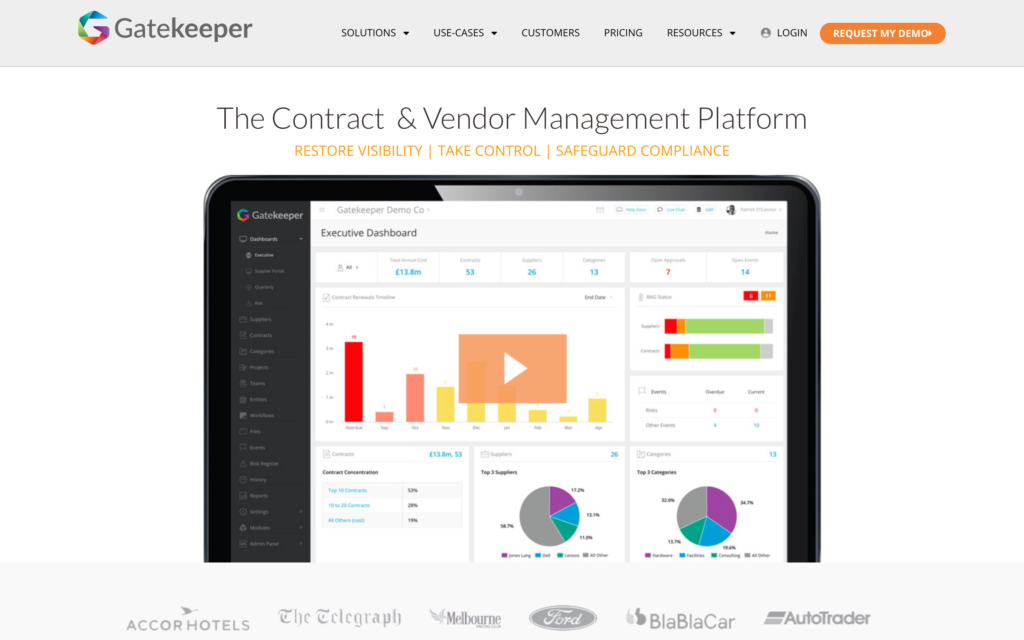
An ideal solution for large companies, Gatekeeper is a vendor management system where every single plan has unlimited storage and unlimited users – a huge plus when considering how much you want to spend on a solution.
A key strength of Gatekeeper is that it is a cloud-based system that is very easy to train teams, both big and small. This means that its vendor management features are easy to learn and get the most out of.
Regardless whether you’re working with 10 vendors or a thousand, it’s easy to manage, store and oversee contracts, while also seamlessly tracking every stage of a vendor lifecycle. So everything, from recruiting new vendors and approving contracts with an eSignature to automating the onboarding process are super easy.
Another strength of Gatekeeper’s VMS system is its customizability. With its Kanban board, users can create workflows suited to their business needs. Also, this solution integrates with more than 200 solutions, including DMS, communication software and SSO.
While it has many strengths, Gatekeeper is one of the more expensive solutions on this list. If you work in a large company, it’s best to try out the solution’s free trial to see if its features match your business’s needs.
Key Features
- Customizable vendor portal
- SLA management
- Record management
- Supplier onboarding
Pros
- Platform is completely cloud-based
- Multiple 3rd party integrations
Cons
- Only annually-paid plans
- Enterprise plans can be expensive
Pricing
Strats at $875/month Trial: Yes Free Plan: No
-
Precoro — Good for: SMBs
Available on
- Web
- Windows
- Mac
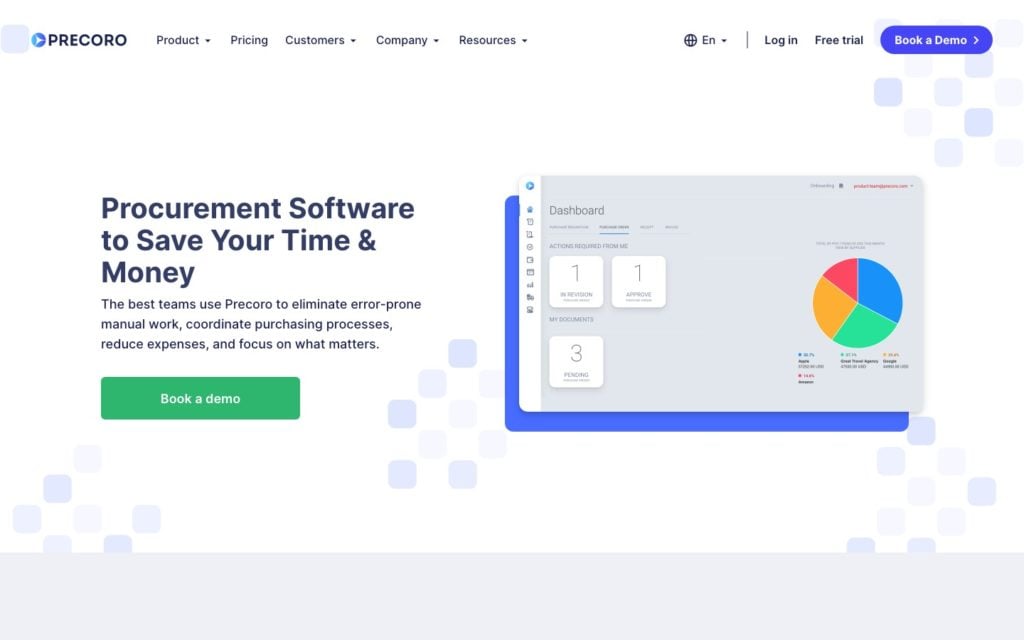
Another vendor management system with highly customizable features, Precoro’s online portal allows you to manage contracts, store all relevant vendor information and track performance. Procurement is easy to manage using this software solution.
Users benefit from Precoro because of its simple, easy-to-use interface, as well as its helpful customer service. This means that it’s easy to get vendors up to speed on the technology through seamless onboarding. Also, it integrates with a variety of platforms, including QuickBooks Online and Xero.
Businesses in industries such as construction, healthcare, hospitality and manufacturing benefit from Precoro’s vendor management capabilities.
While you need to inquire about pricing for more than 20 users, anything less than that will cost you $35 per month, per user, making this one of the more affordable vendor management systems on this list. However, when you consider that solutions like Connecteam start at $29 per month for up to 30 users (in total), it is clear that you’ll get a bigger bang for your buck elsewhere.
Key Features
- Suppliers portal
- Performance reporting
- Contract management
- Contact directory
Pros
- Easy to use and set up
- Useful for businesses in all industries
Cons
- No compliance management feature
- Can’t pay vendors directly via the platform
Pricing
Starts at $35/user/month Trial: Yes — 14-day Free Plan: No
-
Beeline — Good for: Integrations
Available on
- Web
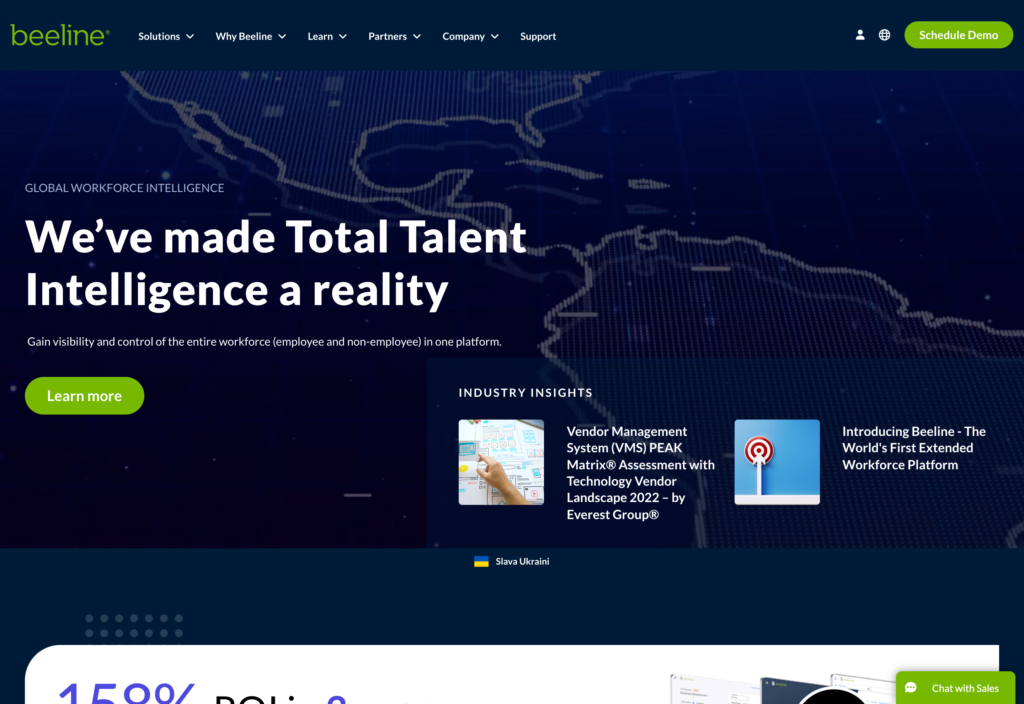
With a wide range of integrations, Beeline is a highly adaptable vendor management system, which means that practically any cloud-based software solution your business is currently using can be synced up with it.
On its own, managers can use Beeline to handle virtually every aspect of vendor management, from contract management and service procurement to vendor compliance, onboarding and training. Another big advantage is how users can use its Direct Sourcing tool to search for and recruit vendors.
However, it’s not perfect. Beeline isn’t the best software on this list when it comes to usability and implementation. Scheduling a team training is the best way to test out its features and to see if it’s easy enough for your business and vendors to use.
It’s worth noting that Beeline’s pricing isn’t available online. This is something worth thinking about when choosing the right VMS. Other solutions on this list, like Connecteam, are more transparent with their pricing.
Key Features
- Resource tracking
- Compliance management
- Contract management
- Vendor onboarding
Pros
- Wide variety of vendor management tools
- Easy to use via the mobile app
Cons
- Lack of pricing transparency
- Not easy to set up
Pricing
Contact vendor for price Trial: No Free Plan: No
-

Onspring — Good for: Customer Support
Available on
- Web

For businesses selecting a vendor management system for the first time, Onspring is a good place to start. With helpful customer support and virtual training sessions, users can quickly get on their feet with this software.
In terms of its features and capabilities, Onspring allows users to store, manage and access all vendor contracts and information from one place. It’s easy to onboard and offboard vendors, track their contracts, customize the dashboard and much more. Onspring also has an intuitive user interface, in which users can simply drag and drop tasks, without too much complication.
One of Onspring’s main downsides is that it doesn’t include the widest range of integrations on this list. Also, the only way to see pricing information is by contacting a sales representative.
It’s also worth mentioning that its features are designed for vendor management, while apps like Connecteam provide features that are much more dynamic for a wider range of business needs.
Key Features
- Contract status tracking
- Customizable dashboards
- Vendor onboarding
- Risk assessments
Pros
- User-friendly drag-and-drop interface
- Good customer service
Cons
- Can’t pay vendors directly
- Functionality can be limiting
Pricing
Contact vendor for price Trial: No Free Plan: No
-

Chondrion — Good for: Retail businesses
Available on
- Web
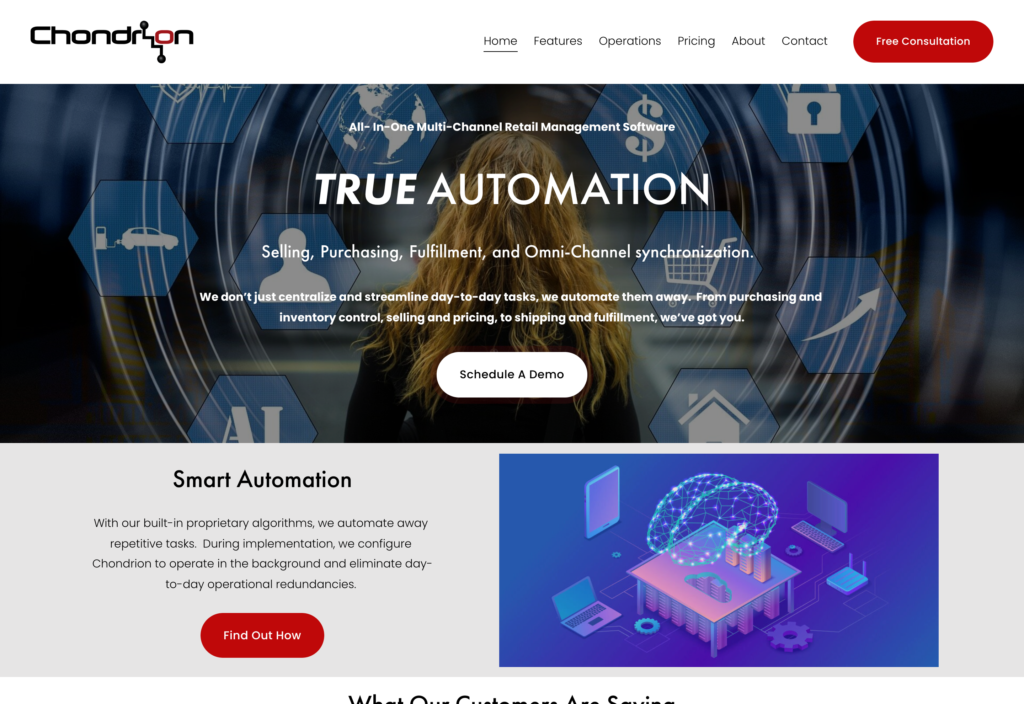
Through one single, centralized dashboard, Chondrion allows users to manage all vendor-related areas, such as inventory control, selling, pricing and shipping.
In terms of its key benefits, Chondrion’s VMS tools provide users with visibility of what they need, while also being able to set rules on pricing, communication and reducing operational costs.
Also, it’s worth noting that Chondrion’s customer support team are very good at helping teams get the most out of the product, while also striving to add new features that might be missing from their current experience.
It’s fair to say that in terms of integrations, Chondrion could be more flexible. Many solutions on this list are able to integrate with accounting and payroll softwares like QuickBooks Online. Connecteam is a good example of this.
Key Features
- Order management
- Reports and analytics
- Inventory management
- Bulk invoicing
Pros
- Supports inbuilt accounting reports
- Good customer service
Cons
- No quote management
- Requires more 3rd party integrations
Pricing
Starts at $100/month Trial: Yes Free Plan: No
-
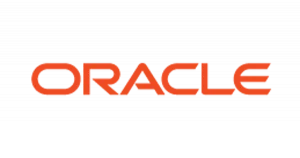
Oracle SCM Cloud — Good for: Manufacturing companies
Available on
- Web
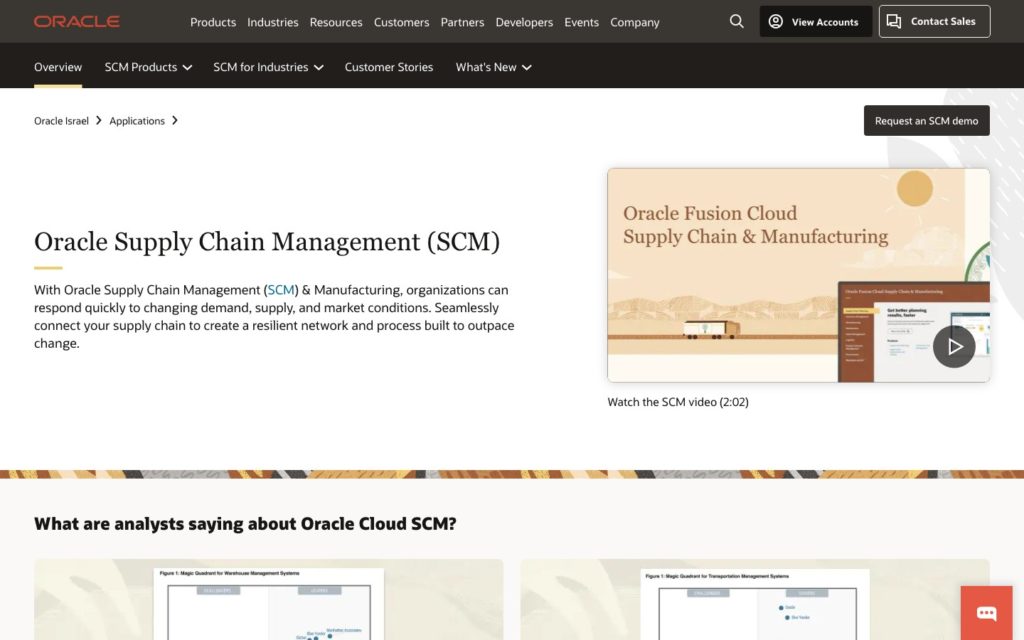
Best suited for small businesses and medium-sized ones, Oracle SCM Cloud is one of the longest-running vendor management systems on this list, and there are plenty of good reasons why it has been running for so long.
Boasting a wide range of applications to handle procurement, order management, product lifecycle management, inventory, and much more, there is nearly nothing this software solution can’t do from a vendor management perspective.
Once again, it’s worth mentioning that this solution’s primary function is vendor management, whereas apps like Connecteam provide an all-in-one experience for businesses to manage employees. Although it is possible to use many of Connecteam’s features to execute vendor management.
Key Features
- Procurement cloud
- Product lifecycle management
- Supply chain analytics
- Supply chain planning
Pros
- Plenty of storage space
- Easy to use and customizable
Cons
- Poor customer service
- Slow to load at times
Pricing
Pricing is not publicly available Trial: Yes Free Plan: No
-
Bright Source by Deposco — Good for: Sourcing and purchasing
Available on
- Web
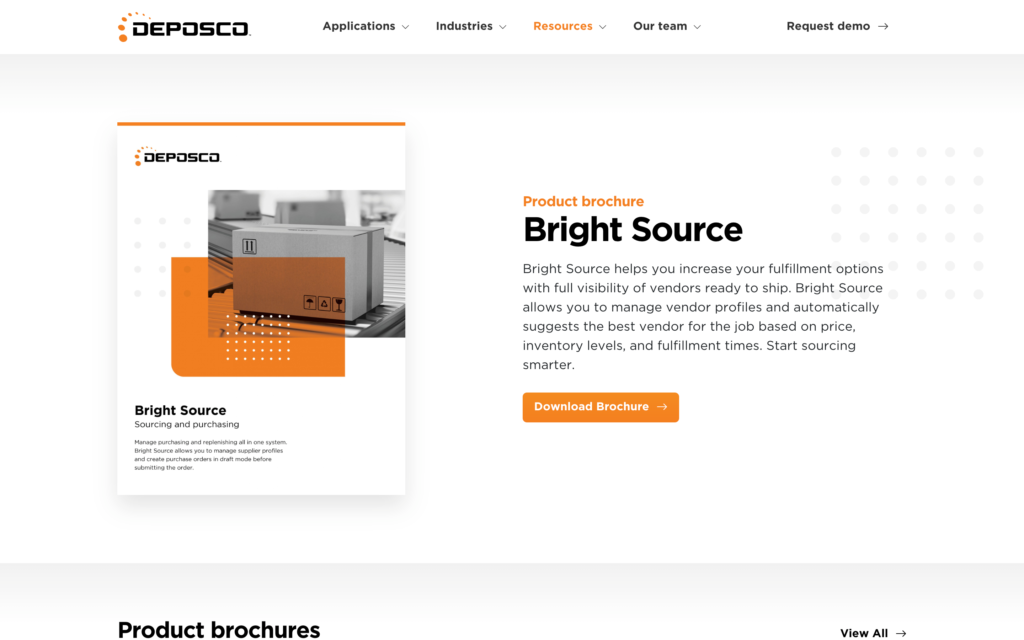
Bright Source is a solution with vendor management, inventory, and sourcing features. It allows companies to effectively manage inventories and their vendor networks. Suited for industries such as healthcare, office supplies, consumer goods, and more, Bright Source’s VMS system is designed for businesses of all sizes.
Some of Bright Source’s key benefits include the fact that you can easily handle software integrations, select vendors by filtering the required criteria, and create replenishment orders directly from the software.
It’s worth noting that Bright Source is just one component of Deposco Bright Suite, which includes other applications for a variety of purposes, including order management, warehouse management, and a point of sale retail app.
Key Features
- Purchasing automations
- Inventory management
- Price tracking
- Customizable reports
Pros
- Great for procurement
- Easy to use
Cons
- Unsatisfactory built-in reporting
- Difficult to implement
Pricing
Contact vendor for price Trial: No Free Plan: No
Compare the Best Vendor Management Systems
| Topic |
 Start for free
Start for free
|

|

|

|
|
|
|

|

|

|
|
|---|---|---|---|---|---|---|---|---|---|---|---|
| Reviews |
4.8
|
4.1
|
5
|
3.8
|
4.8
|
4.8
|
4.2
|
4.8
|
4.6
|
3.9
|
N/A
|
| Pricing |
Starts at just $29/month for the first 30 users
|
Contact vendor for price
|
Starts at $29.99/month
|
Pricing is not publicly available
|
Strats at $875/month
|
Starts at $35/user/month
|
Contact vendor for price
|
Contact vendor for price
|
Starts at $100/month
|
Pricing is not publicly available
|
Contact vendor for price
|
| Free Trial |
yes
14-day
|
no
|
yes
30-day
|
no
|
yes
|
yes
14-day
|
no
|
no
|
yes
|
yes
|
no
|
| Free Plan |
yes
Free Up to 10 users
|
no
|
no
|
no
|
no
|
no
|
no
|
no
|
no
|
no
|
no
|
| Use cases |
Best all-in-one vendor management system
|
Good for: Banking and financial services
|
Good for: IT Companies
|
Good for: Businesses in highly-regulated industries
|
Good for: Large Companies
|
Good for: SMBs
|
Good for: Integrations
|
Good for: Customer Support
|
Good for: Retail businesses
|
Good for: Manufacturing companies
|
Good for: Sourcing and purchasing
|
| Available on |
Web
|
Web
|
Web, Windows, Mac
|
Web, iOS, Android
|
Web, Windows, Mac
|
Web
|
Web
|
Web
|
Web
|
Web
|
What Are Vendor Management Systems?
A vendor management system is a web-based software solution that helps businesses manage and acquire external workforce services, whether on a permanent or temporary basis. With VMS tools, managers can oversee their entire vendor management process – from managing orders and contracts to deliveries and payments – from one place. VMS systems can also reduce risks to boost vendor value throughout all deal life cycles, while also controlling costs.
How Do Vendor Management Systems Work?
Vendor management systems automate all processes when it comes to sourcing, acquiring, overseeing, and paying contingent workers.
There are some basic functionalities that clients can expect to find in the best vendor management systems. These include:
- The ability to distribute orders and to combine multiple subscriptions of a customer into one invoice.
- A repository in which users can create, store, and manage data.
- Businesses are able to make and receive payments using this software.
- All work processes can be conducted via a main portal.
- Businesses can track KPIs, service level agreements, and contracts via analytics.
- Features that track login activity and track all forms of communication between vendors and clients.
Why Should I Use Vendor Management Systems?
A vendor management system can benefit a business in a wide variety of ways. These include:
- Users are able to manage the performance of vendors and suppliers.
- Vendor management systems make businesses more secure and compliant, minimizing risks in the process.
- Transparency is increased, meaning that approval processes are streamlined and users can easily keep track of all transactions during audits.
- VMS software ensures that all billing rates, invoices, contracts, and payment options are standardized. Users can also upload and manage forms and checklists, as well as certifications, resumes, and IDs.
- There are many other benefits of VMS software. It saves time, makes organizations more efficient, pinpoints instances of overspending, reduces business costs, makes workflows completely visible, and increases productivity.
How Much Do Vendor Management Systems Cost?
The pricing of vendor management systems largely differs per provider and often depends on the number of users and the feature package. While many solutions don’t disclose pricing information online and require you to contact a sales representative, pricing often ranges from $30-$875 per month. Particularly vendor management system examples that charge per user can get rather expensive if you’re working with a large team.
Note that high pricing does not necessarily equal a better user experience. Our number one pick, Connecteam, offers premium plans at a flat monthly rate of $29 for the first 30 employees.
At the end of the day though, you need to find a solution with vendor management capabilities, in which you will get the most value for what you’re spending. Our #1 pick, Connecteam, has a basic plan fee of $29 per month for the first 30 users.
FAQs
Some of the most prevalent forms of vendor management include:
- Procurement: choosing vendors and acquiring their services
- Vendor relationships management: forming and maintaining positive working relationships with vendors
- Onboarding: helping vendors adjust to your business’s work processes and culture
- Performance management: overseeing and analyzing the performance of your contingent workforce
- Contract management: handling contract life cycles, as well as renewals, amendments, and terminations
- Vendor risk management: controlling vendor risks attributed to areas such as financial stability, information security, and intellectual property.
This kind of software can be deployed in a variety of ways. Including:
- Shared management services: in some cases, a business collaborates with a VMS provider, creating a shared responsibility between both parties.
- In-house management: the client has full control over the vendor management system, allowing them to use features internally without collaborating with the provider.
- Manager service provider: businesses may choose to fully outsource processes to the provider.
This is the start-to-finish contingent workforce management process in an organized, transparent manner. It is used to monitor vendors and to optimize compliance and performance during their time in the supply chain.
The Bottom Line On Vendor Management System
Ultimately, the list of VMS portals mentioned above are designed to build transparent collaboration and communication between businesses and vendors, while also making it easy to share all relevant files and information and provide complete oversight over contract lifecycles.
While Connecteam isn’t strictly a vendor management system like other solutions on this list, we still believe that it has the best value. This is because you are able to perform practically all vendor management processes, while also managing your in-house employees at the same time.
At any rate, we recommended trying out the vendor management solutions on this list that provide free trials or plans. That way, you can test out their key features and get a better idea of which one is the best fit for your business.



